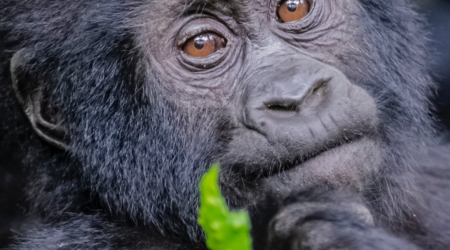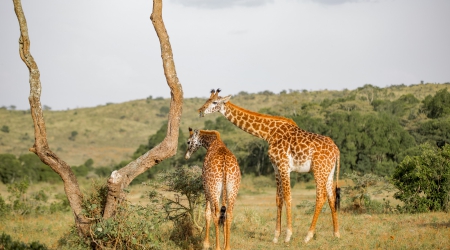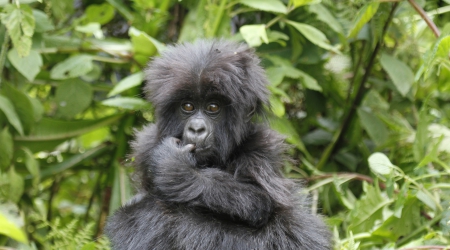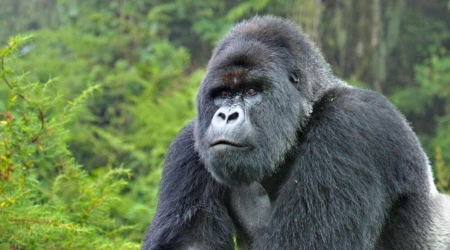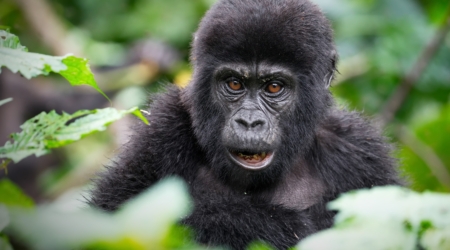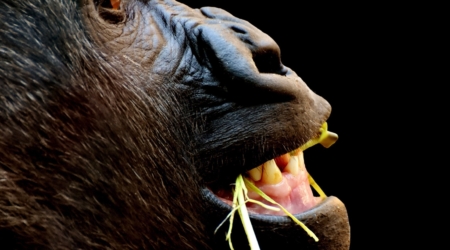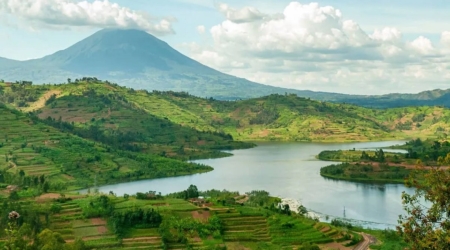Uganda stands out as a critical habitat for one of the world’s most endangered species: the mountain gorilla. These primates are keystone species whose survival directly impacts the region’s ecological health. However, their existence is threatened by poaching, habitat encroachment, and disease. Gorilla conservation efforts in Uganda have achieved significant milestones, but these initiatives require ongoing support to safeguard the future of mountain gorillas.
You can play an active role in these efforts as an individual. From supporting local communities to participating in responsible tourism, there are numerous ways to contribute to their preservation and ensure that these remarkable creatures thrive for generations to come.
The Significance of Gorilla Conservation in Uganda
Mountain gorillas are critically endangered, with fewer than 1,100 individuals remaining in the wild. Uganda is privileged to host a substantial portion of this population, primarily within the protected forests of Bwindi Impenetrable National Park and Mgahinga Gorilla National Park. These areas form part of the larger Virunga Massif, a globally recognised habitat for mountain gorillas.
Ecological Importance
Mountain gorillas play an essential role in maintaining forest ecosystems. As seed dispersers, their foraging habits help sustain the natural regeneration of trees and plants, ensuring the ecological balance of their habitat. This process supports other wildlife and the long-term health of the forests, which act as vital carbon sinks in the fight against climate change.
Cultural and Scientific Value
For communities in Uganda, gorillas are an emblem of the natural world. They hold cultural significance and have become a source of pride in global conservation efforts. Scientifically, mountain gorillas are an invaluable species for studying primate behaviour, evolution, and social structures, contributing to a broader understanding of biodiversity and its interconnections.
Economic Contribution
Gorilla tourism profoundly impacts the local economy. Revenue generated from gorilla trekking permits supports conservation programs, park infrastructure, and community development initiatives. The funds are also used for anti-poaching patrols, habitat restoration, and veterinary care for injured or ill gorillas.
Ways You Can Contribute to Gorilla Conservation
Protecting mountain gorillas requires a multifaceted approach that combines local and global efforts. Your involvement can significantly impact conservation outcomes as a visitor, donor, or advocate. Here are practical ways to support gorilla conservation in Uganda:
a. Responsible Tourism
One of the most direct ways to support conservation is by participating in gorilla trekking experiences. Each trekking permit provides vital funding for Uganda Wildlife Authority initiatives, including habitat protection, ranger salaries, and anti-poaching operations. When choosing a tour operator, ensure they adhere to eco-friendly practices, such as limiting group sizes, following strict wildlife interaction guidelines, and supporting local communities.
During treks, respect the established rules to minimise stress on the gorillas. This includes maintaining a safe distance, avoiding sudden movements, and wearing masks to prevent disease transmission. Adhering to these protocols ensures that your visit contributes positively to conservation efforts rather than causing unintended harm.
b. Support Conservation Organisations
Numerous organisations actively work to protect mountain gorillas and their habitats. Groups like Gorilla Doctors, the International Gorilla Conservation Programme (IGCP), and the Uganda Wildlife Conservation Education Centre provide critical services, from veterinary care to research and policy advocacy. Financial contributions, whether one-time donations or long-term support, help these organisations sustain their operations.
Volunteering is another impactful way to contribute. Many conservation programs offer opportunities for individuals to assist with fieldwork, educational campaigns, or administrative tasks. You become an integral part of these efforts by dedicating time and resources.
c. Advocate and Educate
Raising awareness about the challenges facing mountain gorillas is a powerful tool for conservation. Share accurate, science-based information through social media, community events, or personal networks to inspire others to join the cause. Advocacy efforts can also include engaging with policymakers to push for stronger protections and increased funding for conservation programs.
d. Reduce Your Carbon Footprint
Climate change has a cascading effect on gorilla habitats, influencing vegetation patterns and increasing the likelihood of human-wildlife conflicts. By adopting sustainable practices in your daily life, such as reducing energy consumption, choosing eco-friendly transportation options, and supporting renewable energy initiatives, you help mitigate the broader impacts of climate change on Uganda’s gorillas.
e. Contribute to Community Development Projects
Empowering communities living near gorilla habitats is essential for long-term conservation success. Support initiatives that provide alternative livelihoods, reducing reliance on forest resources. These projects often include sustainable agriculture programs, eco-tourism jobs, and education initiatives to foster a conservation culture among residents.
When communities see tangible benefits from protecting gorillas, they are more likely to act as stewards of their natural environment. Contributing to these efforts builds a sustainable balance between human development and wildlife preservation.
Challenges in Gorilla Conservation
Despite progress in recent decades, significant challenges persist in protecting Uganda’s mountain gorillas. These obstacles highlight the complexities of conservation work and underscore the need for sustained, collaborative action.
Habitat Loss and Fragmentation
One of the most pressing threats is the loss of forest habitat due to agricultural expansion, illegal logging, and human settlement. As communities grow, forests are often cleared to make way for farmland or infrastructure, reducing the available habitat for gorillas and increasing the risk of human-wildlife conflict. Fragmented habitats also hinder the natural movement of gorilla groups, limiting genetic diversity and increasing vulnerability to environmental changes.
Poaching and Wildlife Trafficking
While poaching for bushmeat has declined in areas with active conservation programs, gorillas are still at risk from traps set for other wildlife. These snares can cause severe injuries or fatalities, particularly for young gorillas. Additionally, the illegal wildlife trade remains a concern, as gorillas and their body parts are occasionally targeted by criminal networks.
Disease Transmission
The genetic similarity between gorillas and humans makes them highly susceptible to human diseases. Even minor illnesses, such as the flu, can devastate gorilla populations. The increasing interaction between gorillas and humans, driven by tourism and encroachment, heightens the risk of disease outbreaks. Conservation programs must prioritise veterinary care and enforce strict health protocols to mitigate this risk.
Balancing Tourism and Conservation
While tourism provides critical funding for conservation, it also presents challenges. Overcrowding in popular trekking areas, improper visitor behaviour, and infrastructure construction to support tourism can strain fragile ecosystems. Ensuring that sustainable tourism activities require constant monitoring and enforcement of best practices.
Funding Constraints
Conservation initiatives are often dependent on unpredictable external funding. Economic downturns, shifts in donor priorities, and political instability can all impact the availability of resources for critical programs, such as anti-poaching patrols and habitat restoration. Long-term financial sustainability remains a significant challenge for many organisations working in this space.
Community Relations
In some cases, local communities may perceive gorillas as competitors for resources or a livelihood threat, particularly when gorillas raid crops or damage property. Addressing these concerns requires ongoing dialogue, investment in conflict mitigation strategies, and the development of community-based programs that share the benefits of conservation efforts.
Conclusion
The conservation of Uganda’s mountain gorillas is a shared responsibility that transcends borders. Mountain gorillas play an essential role in maintaining ecological balance while significantly contributing to the cultural identity and economic resilience of the communities that coexist with them. While decades of dedicated work have bolstered their survival, their challenges—habitat loss, poaching, and disease—require continued vigilance and global cooperation.
Now is the time to take action. By supporting these initiatives, you join a global network of individuals and organisations dedicated to creating a future where mountain gorillas thrive in their natural habitat. Your involvement today lays the groundwork for future generations, ensuring these remarkable creatures remain part of Uganda’s natural heritage.







